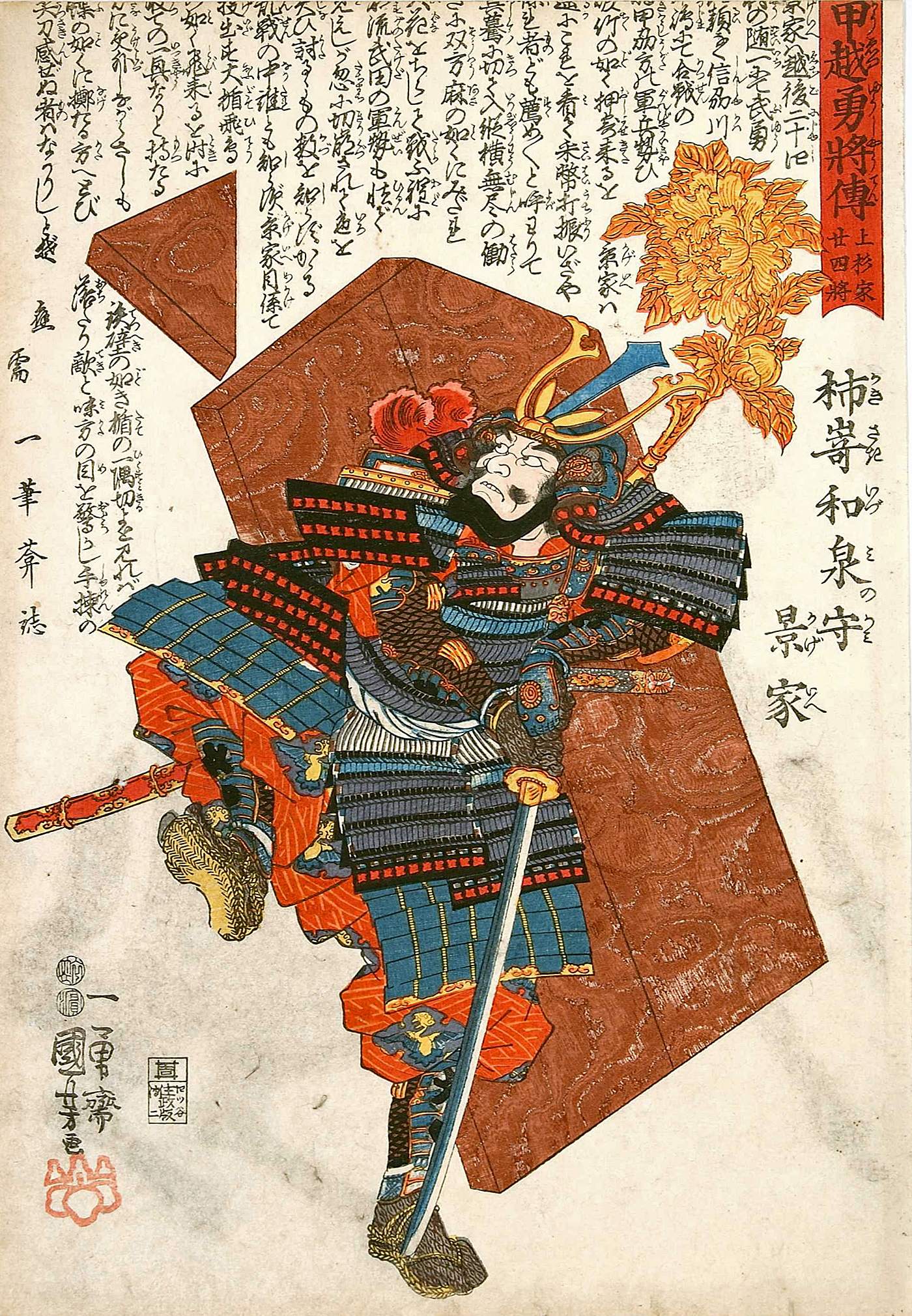Kakizaki Kageie on:
[Wikipedia]
[Google]
[Amazon]
 was a Japanese
was a Japanese
 was a Japanese
was a Japanese samurai
were the hereditary military nobility and officer caste of medieval and early-modern Japan from the late 12th century until their abolition in 1876. They were the well-paid retainers of the '' daimyo'' (the great feudal landholders). They h ...
of the Sengoku period
The was a period in History of Japan, Japanese history of near-constant civil war and social upheaval from 1467 to 1615.
The Sengoku period was initiated by the Ōnin War in 1467 which collapsed the Feudalism, feudal system of Japan under the ...
, who served the Uesugi clan
The is a Japanese samurai clan which was at its peak one of the most powerful during the Muromachi and Sengoku periods (14th to 17th centuries). Appert, Georges. (1888) ''Ancien Japon,'' p. 79./ref> At its height, the clan had three main branch ...
of Echigo Province
was an old province in north-central Japan, on the shores of the Sea of Japan. It bordered on Uzen, Iwashiro, Kōzuke, Shinano, and Etchū Provinces. Nussbaum, Louis-Frédéric. (2005). "''Echigo''" in . It corresponds today to Niigata ...
. He was one of the most important and well known generals of Uesugi Kenshin.
He earned a reputation for being extremely ferocious warrior like Kato Kiyomasa, etc. He fought at the 3rd battle of the Battles of Kawanakajima against the Takeda clan and led the vanguard force for the Uesugi at the 4th battle. Kenshin suspected Kageie of treason and ordered his death, by seppuku
, sometimes referred to as hara-kiri (, , a native Japanese kun reading), is a form of Japanese ritual suicide by disembowelment. It was originally reserved for samurai in their code of honour but was also practised by other Japanese people ...
. A smoldering revenge that he would harbor for the rest of his life.
References
Further reading
*Murooka, Hiroshi (1969). ''Kakizaki Kageie''. Tokyo: Tokyo Nihon Jōkaku shiryōkan. Samurai 1575 deaths Uesugi retainers Year of birth uncertain {{Samurai-stub